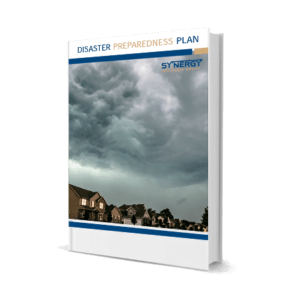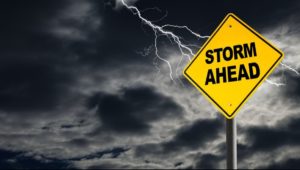How to Keep Pets Calm During A Storm
Our pets have sharp senses and can detect changes in atmospheric pressure, electrical charges, and vibrations, which often precede storms. Thunder, lightning, gusty winds, and sudden changes in lighting can be unsettling for them. Signs of pet anxiety during storms may include restlessness, pacing, excessive barking or meowing, trembling, and seeking shelter in unusual places. By understanding their reactions, you can better address their needs.
Preparation:
1. Create a Safe Haven: Designate a cozy, secure space where your pets can retreat during storms. A quiet room with familiar bedding, toys, and a comfortable hiding spot can provide them with a sense of security.
2. Gradual Exposure: If your pets are anxious during storms, consider desensitizing them to storm-related sounds. Play recordings of thunder or rain at low volumes while engaging them in enjoyable activities. Gradually increase the volume over time to help them build a positive association.
3. Positive Reinforcement: Reward calm behavior during storms with treats, praise, or gentle petting. This positive reinforcement can help them associate the storm with positive experiences.
During the Storm:
1. Stay Calm: Pets often mirror their owners’ emotions. If you remain calm during the storm, your pets are more likely to feel secure. Engage in soothing activities, such as reading, watching TV, or listening to calming music.
2. Distraction and Engagement: Provide engaging toys or activities that capture your pets’ attention. Puzzle toys filled with treats or interactive play can divert their focus from the storm.
3. Physical Contact: Physical touch and closeness can be reassuring. Holding, cuddling, or simply being present can help alleviate your pets’ anxiety.
Hurricane Preparedness for Pets:
1. Emergency Kit: Include essential pet supplies in your hurricane preparedness kit: food, water, medication, a leash, a carrier, ID tags, medical records, and a recent photo of your pet.
2. Evacuation Plan: Determine pet-friendly evacuation routes and shelters in your area. Keep a list of contacts who can provide temporary shelter for your pets if needed.
3. Identification: Make sure your pets have proper identification, including a collar with up-to-date tags and a microchip with accurate contact information. This is important in case of separation during a storm.
Post-Storm Care:
1. Reassurance and Routine: After the storm passes, establish a routine as soon as possible. Pets thrive on consistency, and returning to familiar activities can help restore their sense of normalcy.
2. Check for Hazards: Inspect your surroundings for any potential hazards that might have been caused by the storm. Broken fences, fallen branches, or debris can pose risks to your pets.
3. Monitor for Stress: Keep an eye on your pets for any lingering signs of stress. If their anxiety persists, consult a veterinarian to explore potential solutions, such as behavioral training or medication.
As responsible pet owners, our priority is making sure the well-being of our furry companions, especially during unpredictable weather events. By understanding their anxiety triggers, preparing ahead of time, and providing comfort during storms, we can help our pets feel safe and secure.
Having a plan in place ahead of time can reduce anxiety for the whole family. Download our Disaster Preparedness Plan to help you prepare for a storm.




